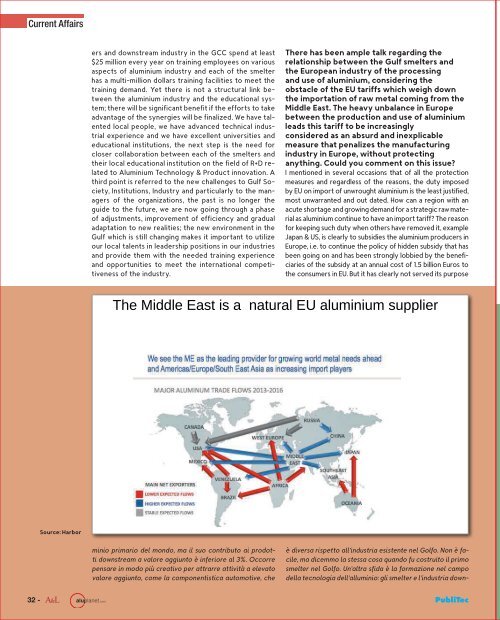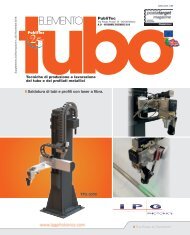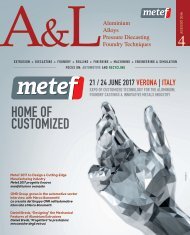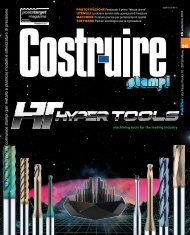sfogliabile_AL_n6_dicembre
Create successful ePaper yourself
Turn your PDF publications into a flip-book with our unique Google optimized e-Paper software.
Current Affairs<br />
ers and downstream industry in the GCC spend at least<br />
$25 million every year on training employees on various<br />
aspects of aluminium industry and each of the smelter<br />
has a multi-million dollars training facilities to meet the<br />
training demand. Yet there is not a structural link between<br />
the aluminium industry and the educational system;<br />
there will be significant benefit if the efforts to take<br />
advantageofthesynergieswillbefinalized.Wehavetalented<br />
local people, we have advanced technical industrial<br />
experience and we have excellent universities and<br />
educational institutions, the next step is the need for<br />
closer collaboration between each of the smelters and<br />
their local educational institution on the field of R+D related<br />
to Aluminium Technology & Product innovation. A<br />
third point is referred to the new challenges to Gulf Society,<br />
Institutions, Industry and particularly to the managers<br />
of the organizations, the past is no longer the<br />
guidetothefuture,wearenowgoingthroughaphase<br />
of adjustments, improvement of efficiency and gradual<br />
adaptation to new realities; the new environment in the<br />
Gulf which is still changing makes it important to utilize<br />
our local talents in leadership positions in our industries<br />
and provide them with the needed training experience<br />
and opportunities to meet the international competitiveness<br />
of the industry.<br />
There has been ample talk regarding the<br />
relationship between the Gulf smelters and<br />
the European industry of the processing<br />
and use of aluminium, considering the<br />
obstacle of the EU tariffs which weigh down<br />
the importation of raw metal coming from the<br />
MiddleEast.TheheavyunbalanceinEurope<br />
betweentheproductionanduseofaluminium<br />
leads this tariff to be increasingly<br />
considered as an absurd and inexplicable<br />
measure that penalizes the manufacturing<br />
industry in Europe, without protecting<br />
anything. Could you comment on this issue?<br />
I mentioned in several occasions that of all the protection<br />
measures and regardless of the reasons, the duty imposed<br />
by EU on import of unwrought aluminium is the least justified,<br />
most unwarranted and out dated. How can a region with an<br />
acute shortage and growing demand for a strategic raw material<br />
as aluminium continue to have an import tariff? The reason<br />
forkeepingsuchdutywhenothershaveremovedit,example<br />
Japan & US, is clearly to subsidies the aluminium producers in<br />
Europe, i.e. to continue the policy of hidden subsidy that has<br />
beengoingonandhasbeenstronglylobbiedbythebeneficiaries<br />
of the subsidy at an annual cost of 1.5 billion Euros to<br />
the consumers in EU. But it has clearly not served its purpose<br />
e Midde a i a naura auiniu uier<br />
Source: Harbor<br />
minio primario del mondo, ma il suo contributo ai prodotti<br />
downstream a valore aggiunto è inferiore al 3%. Occorre<br />
pensareinmodopiùcreativoperattrarreattivitàaelevato<br />
valore aggiunto, come la componentistica automotive, che<br />
èdiversarispettoall’industriaesistentenelGolfo.Nonèfacile,madicemmolastessacosaquandofucostruitoilprimo<br />
smelternelGolfo.Un’altrasfidaèlaformazionenelcampo<br />
della tecnologia dell’alluminio: gli smelter e l’industria down-<br />
32 -<br />
.com<br />
PubliTec





